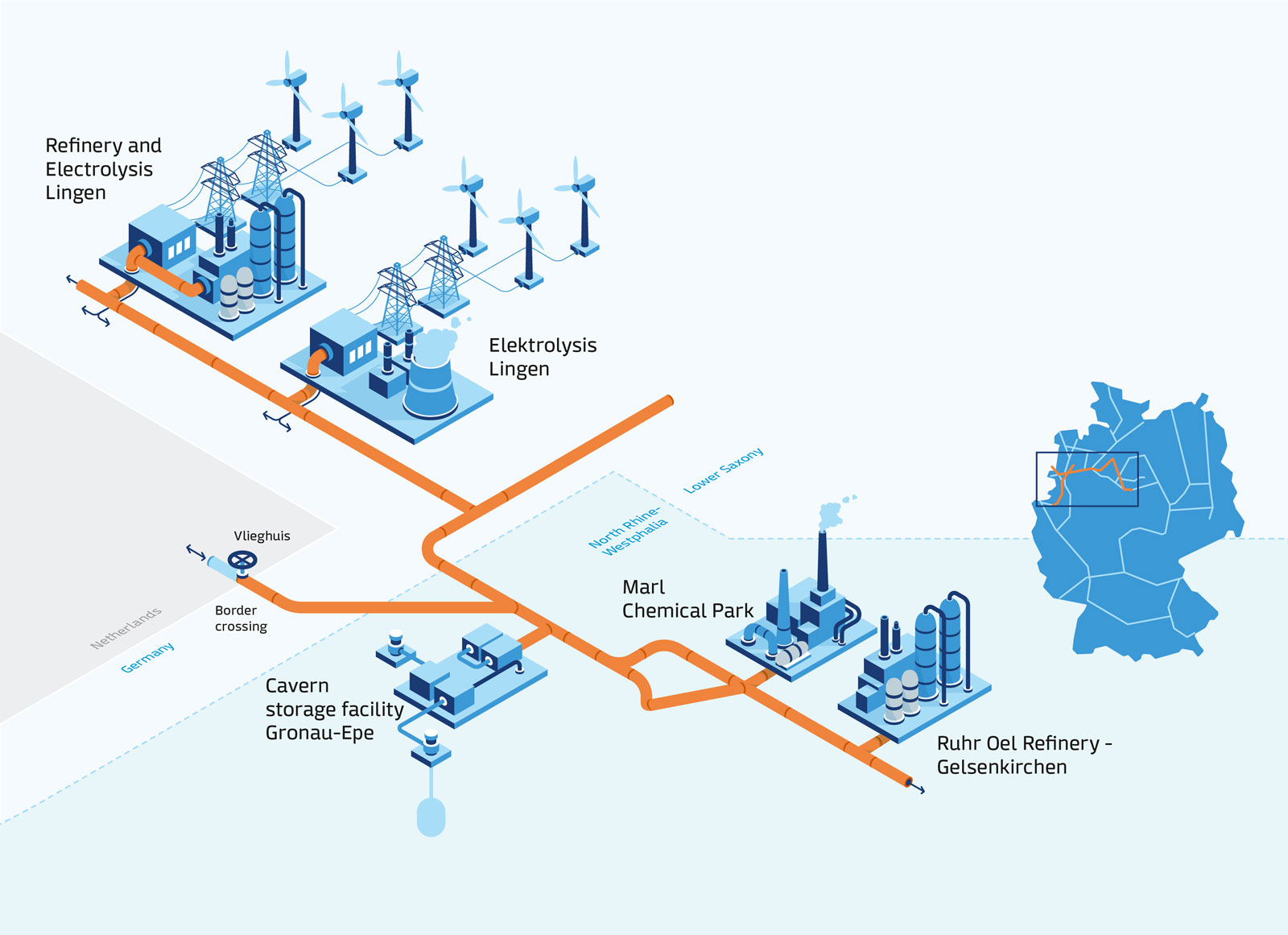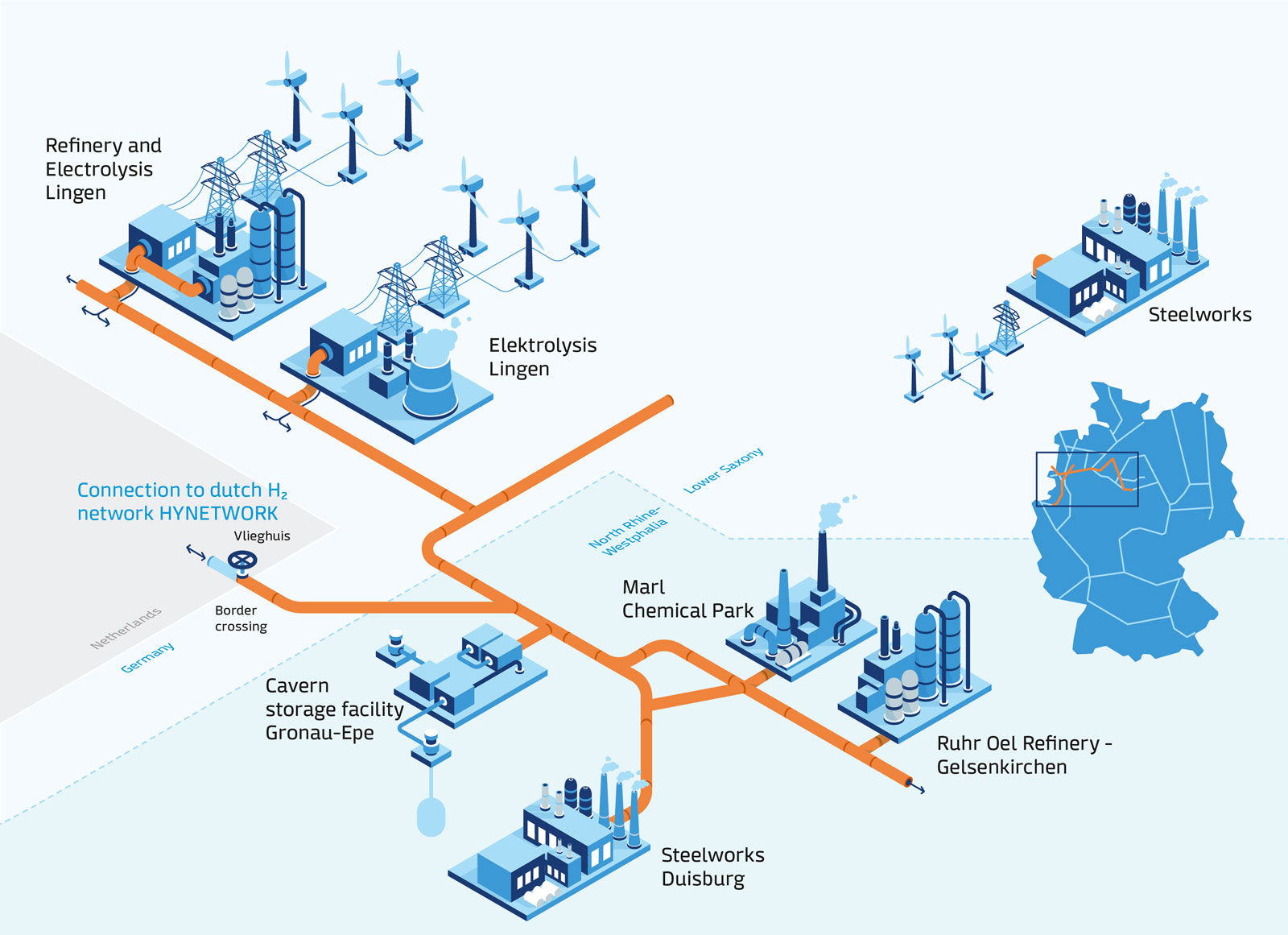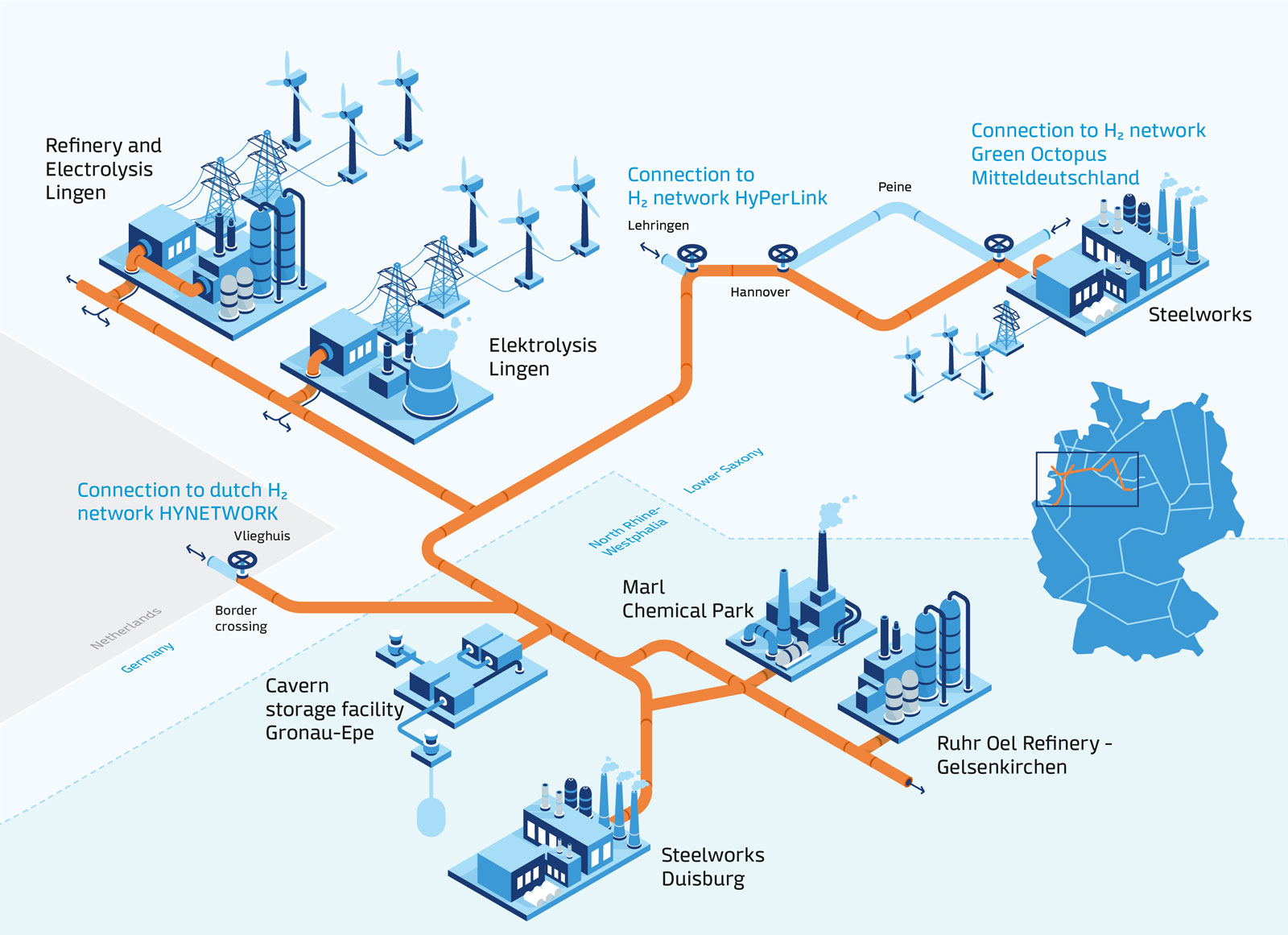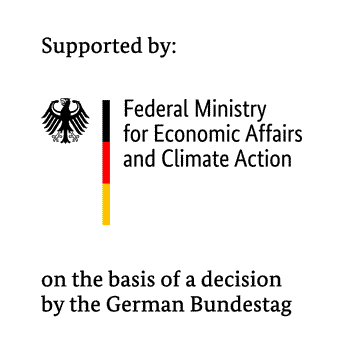Projekte
GET H2 - Starting point for the European Hydrogen Economy
Under the name GET H2, we will build the core for a European hydrogen economy. A network from Lingen to the Ruhr region and from the Dutch border to Salzgitter will link the production, transport, storage and industrial usage of green hydrogen. Infrastructure is to be continuously expanded along the entire value chain. Connections for all sectors as well as for the import of hydrogen are being created. This is the starting point for a European hydrogen economy.
The implementation will take place in several stages.
2025: GET H2 Nukleus
Together with our partners bp, Evonik, Nowega, OGE, RWE Gas Storage West and RWE Generation we are building the first publicly accessible hydrogen infrastructure in Germany. The GET H2 Nukleus project connects the production of green hydrogen with industrial consumers in Lower Saxony and NRW. The approximately 130-kilometre network from Lingen to Gelsenkirchen will be the first H2 network with non-discriminatory access and transparent prices.

- The green hydrogen is produced from wind power in Lingen, Lower Saxony. For this purpose, an electrolysis with a capacity of more than 100 MW is being built at the RWE power plant site in Lingen.
- Existing gas pipelines of the gas grid operators Nowega and OGE will be converted to transport 100 percent hydrogen. Evonik is also constructing a partial new building between the Marl Chemical Park and the Ruhr Oel refinery bp Gelsenkirchen.
- A new hydrogen pipeline is being built by Nowega and OGE between Heek and Gronau-Epe to connect a new hydrogen salt cavern storage facility of RWE Gas Storage West with producers and consumers.
- This infrastructure will transport the climate-neutral raw material to industrial customers.
The companies use the green hydrogen in their production processes and thus significantly reduce their CO2 emissions.
The GET H2 Nucleus is the first building block of a Germany-wide H2 infrastructure, which was presented by the members of FNB Gas e.V. in the core network application to the Federal Network Agency.
2026: Link to the Netherlands
The next step is a connection up to the Dutch border at the import point Vlieghuis in 2026 by our partner Thyssengas. The transmission system operator is converting existing gas pipelines to transport 100% hydrogen, supplemented by a partial new building. This step will create the connection to the Dutch hydrogen network. The European project initiative connects Germany, the Netherlands, Belgium and France via a hydrogen network.
In addition, a 100 MW electrolysis plant will be commissioned at the BP site in Lingen and connected to the hydrogen infrastructure via Nowega pipelines.

2027: Integration of storage facilities and launch in Salzgitter
Further important steps to expand the infrastructure will be implemented by 2027:
- By building additional pipelines for the transport of hydrogen, OGE and Thyssengas are creating an additional connection in the direction of the Ruhr area and enabling the supply of the new direct reduction plants of the thyssenkrupp Steel Europe steelwork.
- Salzgitter AG is commissioning an electrolyser at its steelworks, which is supplied with electricity from wind energy. This is part of the SALCOS project, Salzgitter AG’s climate initiative to make steel production climate-friendly.

2030: Connecting the pieces
The final step is to connect Salzgitter AG via existing Nowega gas pipelines by 2030, which will be converted to transport hydrogen.
To enable the implementation of the overall project outlined here, the individual projects are being funded by the Federal Ministry for Economic Affairs and Energy as part of the IPCEI (Important Project of Common European Interest) Hy2Infra, as well as by the participating federal states of Lower Saxony and North Rhine-Westphalia. This then includes GET H2 Nukleus, SALCOS and Green Octopus, three existing hydrogen projects. By using the green hydrogen in refineries, in steel production and for other industrial uses, the overall project has a CO2 avoidance potential of up to 16 million tonnes by 2030.

The expansion of the project by partners from the transport sector and for the distribution of green hydrogen in the field is also already in preparation.



